SEO
11 Best ChatGPT Alternatives To Try In 2023

Since the launch of ChatGPT, SEO professionals and creators everywhere have been trialing the AI chatbot to see how it can make life easier.
When it comes to automating tasks, creating content, and devising solutions for particular projects, ChatGPT has been extensively tested by the public.
But OpenAI isn’t the only chatbot on the block.
We now have Bard, Bing, and other ChatGPT alternatives in the AI market.
Until now, ChatGPT has been dominating headlines – but there are other ChatPGT alternatives that you can try.
What Is ChatGPT And What Can It Be Used For?
ChatGPT is a highly advanced artificial intelligence model which has the ability to interpret and utilize natural language for use in various types of applications.
The platform comes with natural language understanding capabilities, automated search and response features, and integrations with existing customer service systems.
There are a wide variety of tasks that ChatGPT can be used for, including:
- Generating text content in a wide variety of flavors, from different writing styles to subject matter expertise and languages.
- Figuring out solutions, answering questions or concerns, and breaking down the core components of issues.
- Automating responses for chatbots. These responses can be tailored to a wide variety of circumstances.
- As a developer resource tool to create landing pages and websites.
- For SEO, to assist in keyword research and content ideation – and even for link suggestions.
- Assisting in the heavy lifting of other SEO tasks by integrating queries in Excel with ChatGPT API.
- Helping developers with code by creating complex code patterns and solutions. It’s also possible to write entire programs from scratch using ChatGPT – although if you don’t have coding knowledge, this is not recommended because doing so can cause issues where customized code is required. ChatGPT is only intended to create code to the minimal level required to achieve actual functionality.
But what if you might want to use an alternative platform to perform similar tasks in a way that lets you get away with more (or less), depending on the project you are working on?
Enter a few choice ChatGPT alternatives.
Some ChatGPT alternatives include those from Google to Bing and other platforms created for research purposes. These alternatives are rich and varied; some provide entertainment value only, allowing you to chat with specific characters who pique your interest.
In addition to these alternatives, there are AI writers and content generators that help creators generate next-level content with the help of AI technologies.
The Drawbacks Of ChatGPT
ChatGPT requires a lot of fact-checking, which can be time-consuming. If you’re working on an article, you may be better off writing it yourself if you have significant knowledge of the topic.
There are also other drawbacks to ChatGPT.
ChatGPT cannot generate real-time data. This means that it cannot monitor customer conversations in real time and identify potential issues as they arise. As a result, businesses may be unable to address customer queries and complaints quickly or effectively.
There are other ethical dilemmas for SEO professionals.
Should writers disclose to their clients that content is written with ChatGPT and not an original work? Do writers need to consider that they are passing off work that is not their own?
Another drawback for ChatGPT is that it can only work from a general frame of reference and information already on a site like Wikipedia or in its database.
If the information does not exist in its database or elsewhere, it’s impossible for ChatGPT to “learn” it because of its predictive nature. That’s why it’s important to be careful about AI claims regarding ChatGPT and its capabilities.
Despite the drawbacks, the benefits of ChatGPT in assisting creators with automating tedious tasks are significant. So long as you go in knowing about these drawbacks, you should be okay.
Just don’t expect ChatGPT to pick up everything for you where your lack of knowledge leaves off.
That is where most creators run into trouble with ChatGPT and AI-generated content: they let the application do most of the heavy lifting, when, in fact, creating factually-accurate and human-readable content is something that needs to be done with human minds.
Why Should You Use A ChatGPT Alternative?
One of the main reasons for using a ChatGPT alternative is to gain access to more advanced features.
For example, many of the alternatives offer sentiment analysis and speech recognition capabilities that can help businesses create personalized conversations with customers. This allows companies to tailor their responses based on the customer’s input and provide a more engaging experience.
Additionally, some of the alternatives include support for multiple languages and integrations with other customer service systems.
Another advantage of using a ChatGPT alternative is that it may be more cost-effective. While ChatGPT offers an impressive range of features, many businesses find that the pricing structure can be too expensive for their needs.
Alternatives often offer more flexible pricing structures and may even provide free plans for small businesses.
Some of the ChatGPT alternatives are easier to use than others. Many of them come with simple user interfaces that make it easy to get started quickly without needing any prior coding knowledge.
This can save businesses time and money by allowing them to quickly set up their virtual agent without hiring a developer.
11 ChatGPT Alternatives For 2023
Here are 11 of the best ChatGPT alternatives for anyone who is looking for a leg up on their projects:
1. Google Bard
Google Bard is Google’s answer to ChatGPT. It is an experimental AI conversational service that’s powered by Google’s LAMDA (Language Model for Dialogue Applications).
The simple explanation is that Bard is another AI Chatbot that is like ChatGPT.
According to Google’s FAQ page on Bard, LAMDA has been fed trillions of words. This helps it predict responses and enables it to maintain a conversation.
But, like ChatGPT, Bard is not all-knowing. In fact, Bard showcased its extraordinary capacity to get things wrong in a Google Bard demo that caused the company’s stock to plummet by billions of dollars overnight.
So, like any chatbot, you have to be careful about some of the information that Bard produces.
2. Microsoft Bing Chat
-
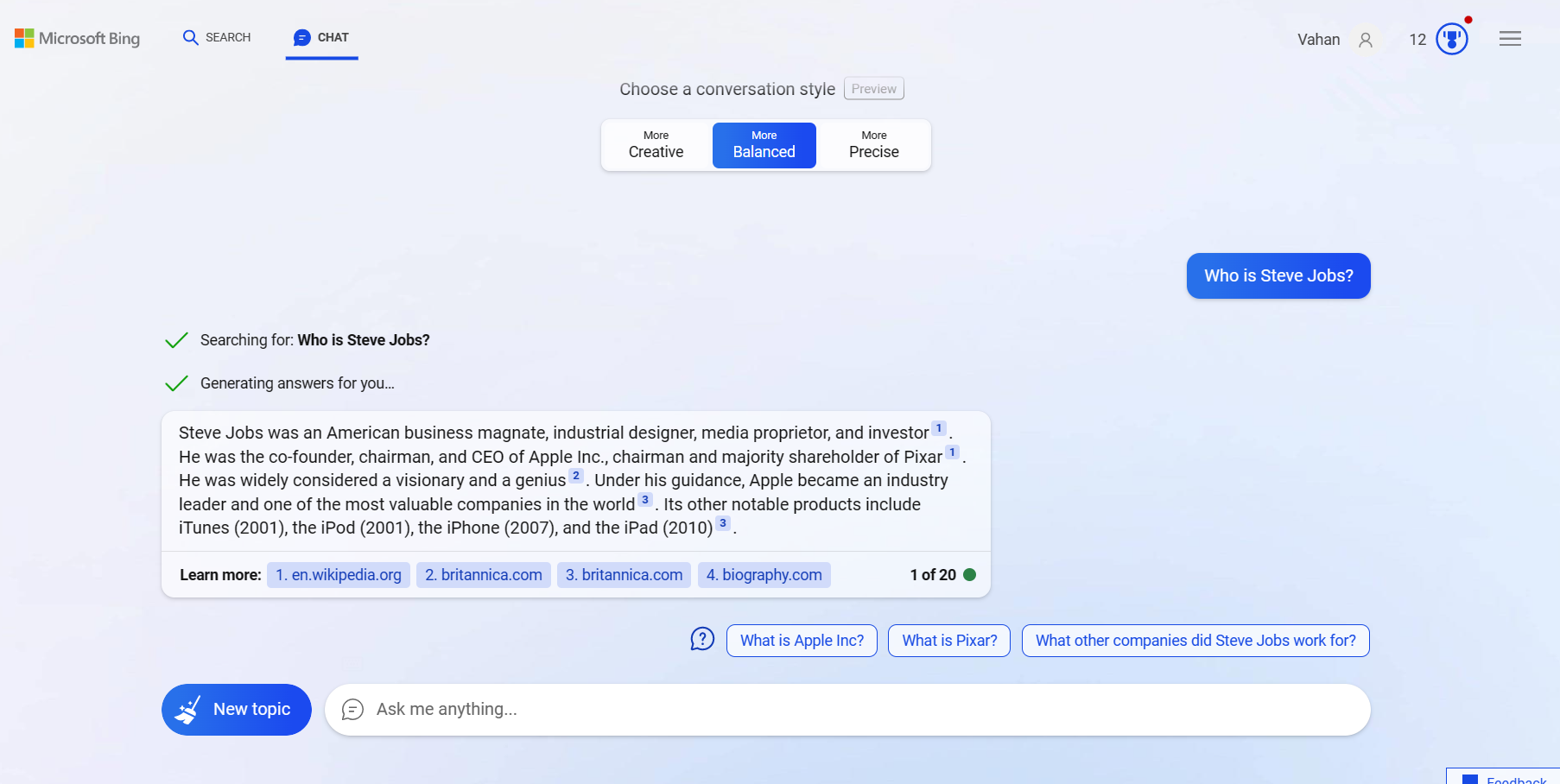 Screenshot from Bing Chat, April 2023
Screenshot from Bing Chat, April 2023
Microsoft Bing’s new chat, codenamed Sydney, is making waves in the AI marketplace.
This just goes to show that Google is not the only one who is working to penetrate the AI market. Microsoft has also introduced an upgraded version of Bing, utilizing an upgraded version of ChatGPT.
Microsoft also claims that this new version is even more accurate and faster than before.
3. Jasper.ai
-
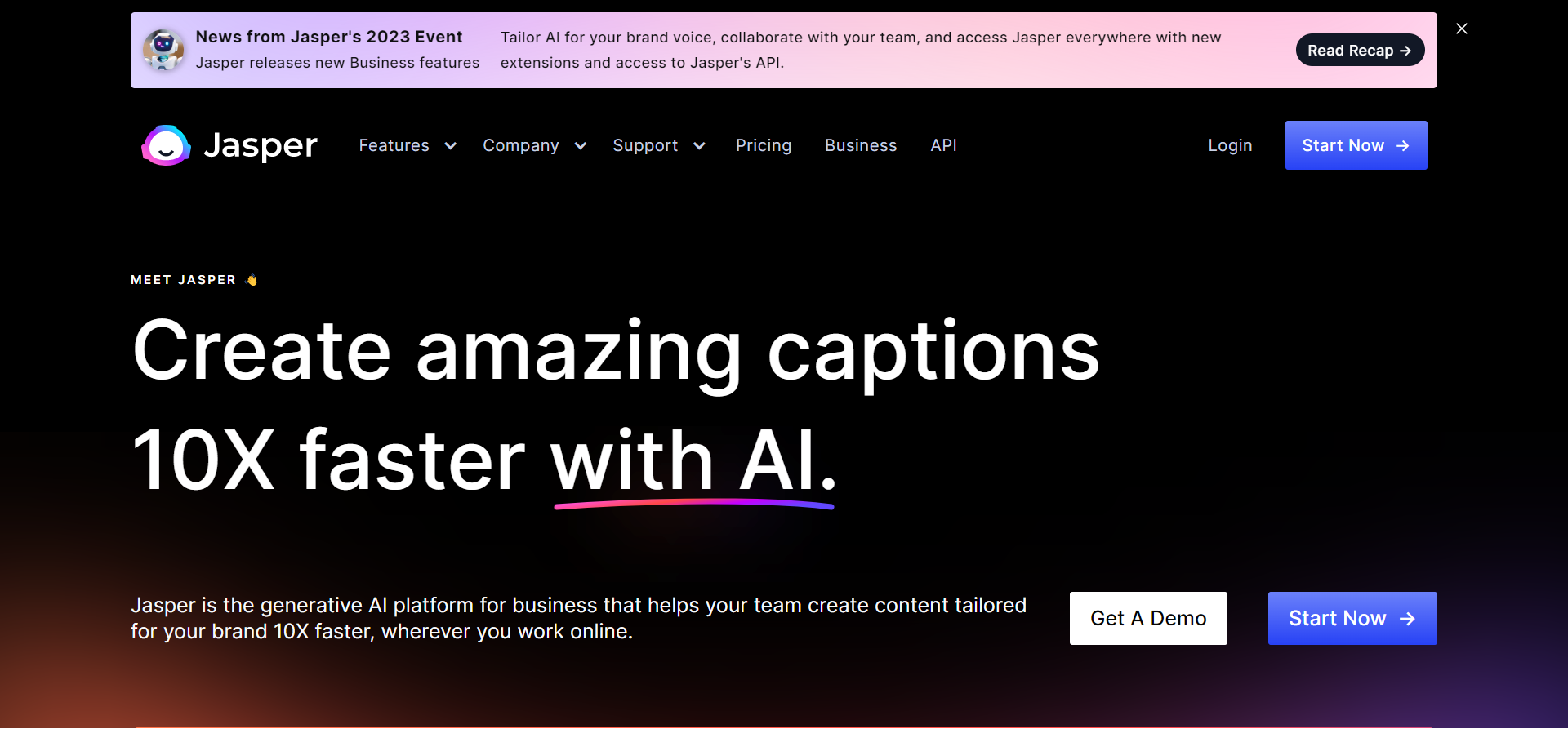 Screenshot from Jasper.ai, April 2023
Screenshot from Jasper.ai, April 2023
Jasper.ai is a conversational AI platform that operates on the cloud and offers powerful natural language understanding (NLU) and dialog management capabilities.
Like ChatGPT, it can provide writing inspiration, support for creating articles, and assist marketing teams in developing effective ad copy and generating images.
Jasper.ai uses Open’s GPT-3.5 in combination with internal NLU models, and it is particularly useful for customer service, sales, and marketing-related tasks.
4. Claude
-
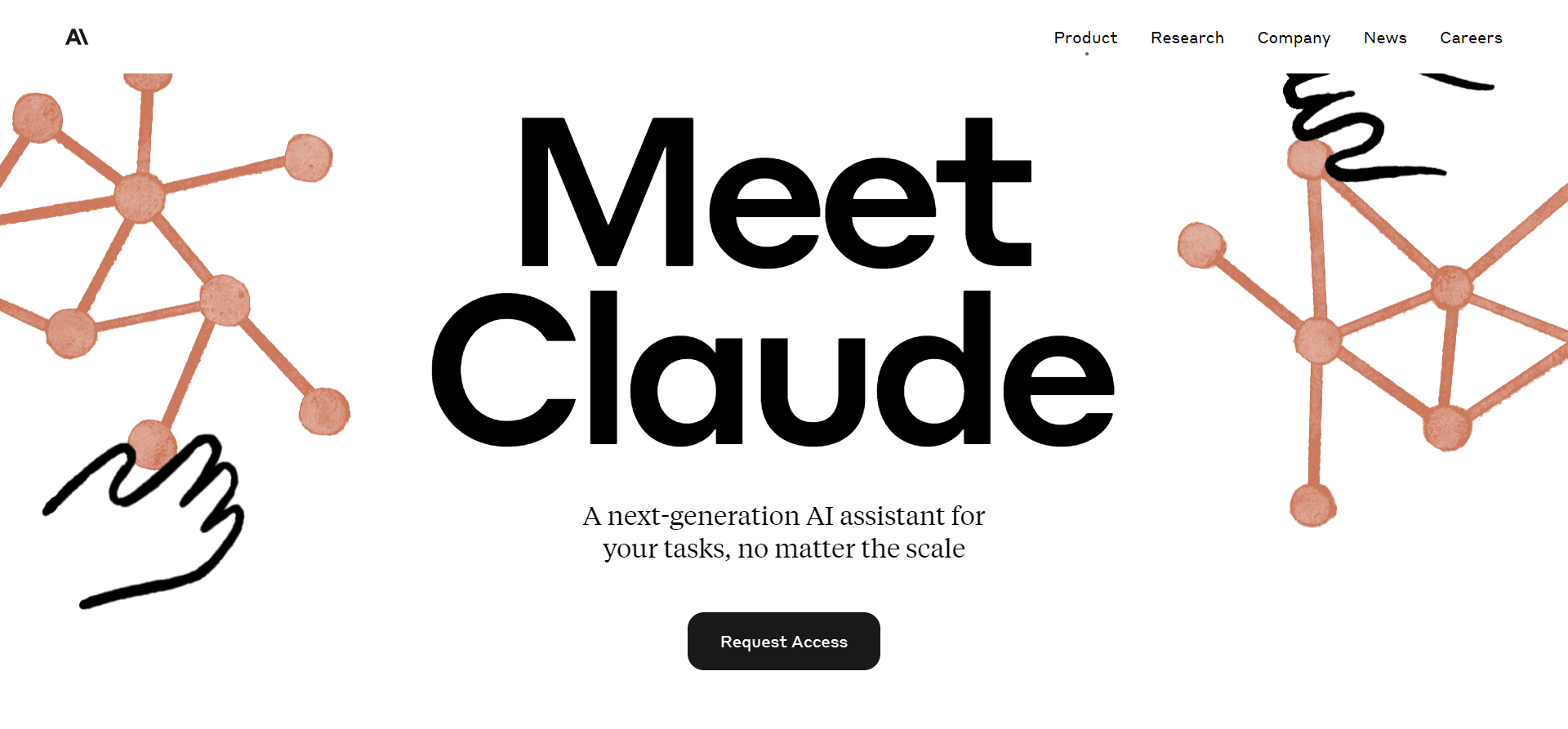 Screenshot from Claude, April 2023
Screenshot from Claude, April 2023
Anthropic has recently launched Claude, which is a next-generation AI assistant capable of performing a wide range of conversational and text-processing tasks.
The development of Claude is based on Anthropic’s research into training AI systems to be helpful, honest, and harmless.
Claude can help with use cases such as summarization, search, creative and collaborative writing, Q&A, coding, and more.
It is available through a chat interface and API in their developer console.
Anthropic offers two versions of Claude: Claude and Claude Instant, with the latter being a lighter, less expensive, and faster option. The company has partnered with several brands, including Quora, Juni Learning, Notion, and DuckDuckGo.
5. ChatSonic
 Screenshot from Chatsonic, April 2023
Screenshot from Chatsonic, April 2023ChatSonic is a ChatGPT alternative with factual content-creation capabilities.
Its page claims that it is powered by Google Search, meaning it can help you potentially create content with accurate, factual information about trending topics and current events in real time.
I say “claimed” because ChatGPT is based on Open AI’s GPT-3 language model, which has only been trained on information data sets up to 2021. So it seems that claims like this could be wrong about the capabilities of such applications – unless ChatSonic has introduced a brand new process that processes current information inside its software.
And if not, it is grossly overstating what the application can do.
However, I have not tried this application, so it may have found a way around the limitations of the original GPT-3 language model.
6. NeevaAI
 Screenshot from NeevaAI, April 2023
Screenshot from NeevaAI, April 2023As another ChatGPT alternative, NeevaAI is a proprietary search engine that creates a unique experience that merges ChatGPT and other specific language models.
It also enhances the experience with current data and the accuracy and precision provided by the Neeva search engine.
This system has the ability to look through many millions of pages to create a thorough response that’s also appended by sources that are relevant to the project.
The company claims that NeevaAI guarantees a browsing experience that’s free of trackers and ads. It also provides references in the search results, so you can verify the source of the information.
7. YouChat
-
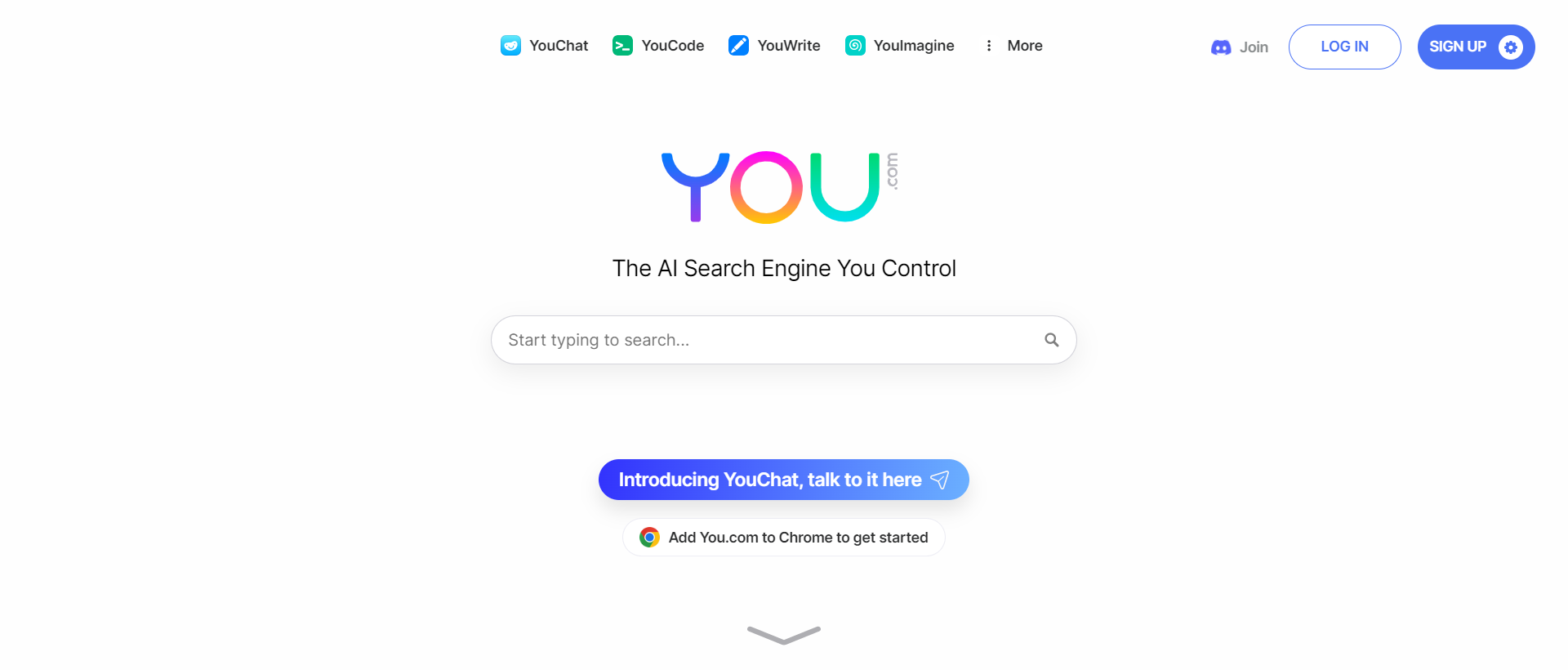 Screenshot from YouChat, April 2023
Screenshot from YouChat, April 2023
You.com has introduced YouChat, an AI search assistant that allows users to have human-like conversations right in their search results.
YouChat is a ChatGPT-like AI assistant that provides real-time data and cites sources to offer increased accuracy and relevance.
With YouChat, users can ask complex questions, solve problems using logical reasoning, learn new languages, and create content in any language.
8. Perplexity
-
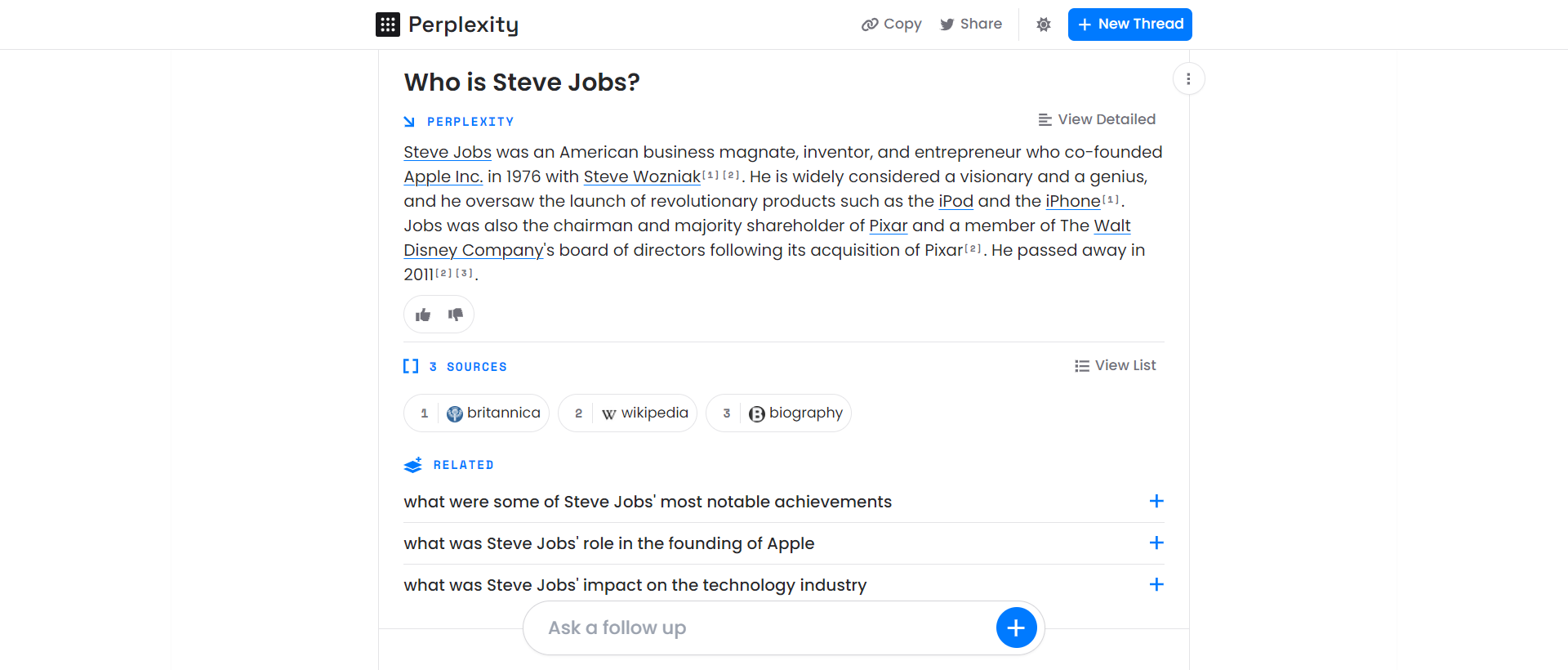 Screenshot from Perplexity, April 2023
Screenshot from Perplexity, April 2023
Perplexity AI’s conversational search engine enables users to get answers to questions on any number of topics.
It uses OpenAI’s GPT-3.5 API and, unlike ChatGPT, responds by citing sites and sources from around the web.
It also offers users follow-up questions to dive deeper into a particular topic.
9. Character.AI
 Screenshot from Character.AI, April 2023
Screenshot from Character.AI, April 2023While ChatSonic has a “personas feature” built in, it’s just a feature. With Character.AI, this tool zeroes in on AI personalities entirely to provide chat-like experiences using AI characters.
You can choose from a variety of characters to chat with different types of personalities – from Mario to Tony Stark.
This is akin to the tone of voice feature that is provided in Jasper.ai, but on an entirely different level. It’s also something that’s more for entertainment rather than for real automation value.
Nevertheless, if you’re looking for an AI experience that’s different than what’s currently on the market, this is something you may be interested in.
10. Elicit
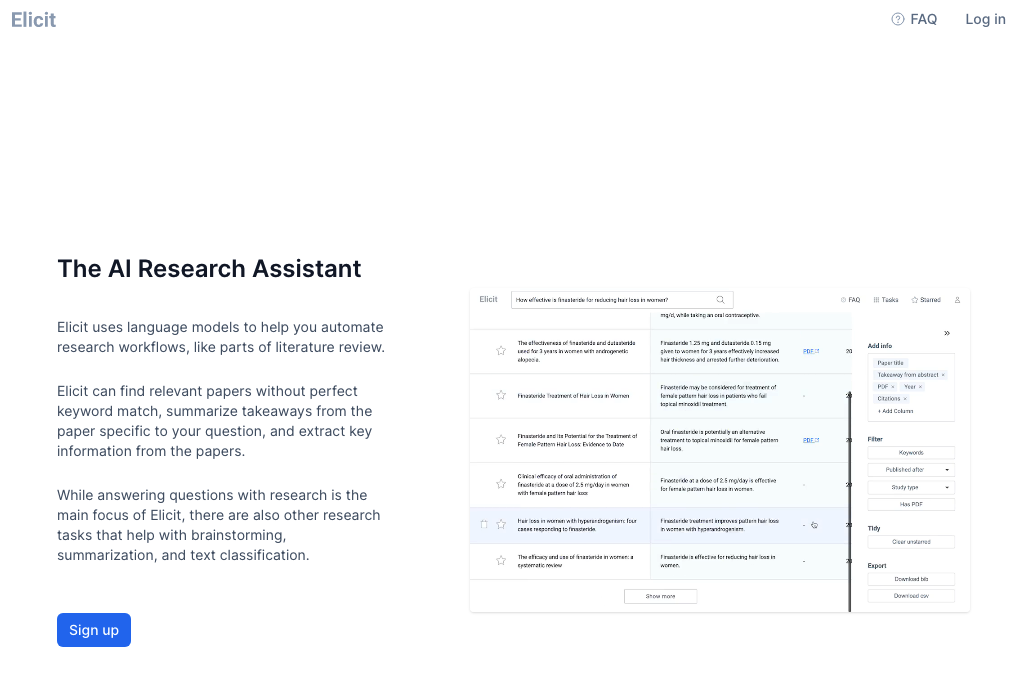 Screenshot from Elicit, April 2023
Screenshot from Elicit, April 2023Elicit is a platform that calls itself an AI research assistant, meaning it can help assist with research and other tasks.
Its primary ability is a feature it calls Literature Review. The way this works is that when you submit a query, Elicit will provide summaries from relevant research papers and documents related to your question.
It’s very efficient in generating helpful summaries of information while prioritizing the veracity and accuracy of the source.
With Elicit, you can access a massive publication collection that is relevant to your query quickly. It also has the ability to answer research questions.
Although an excellent tool for completing research, there are some features that make other ChatGPT alternatives better for updated and more comprehensive research.
11. Learnt.ai
-
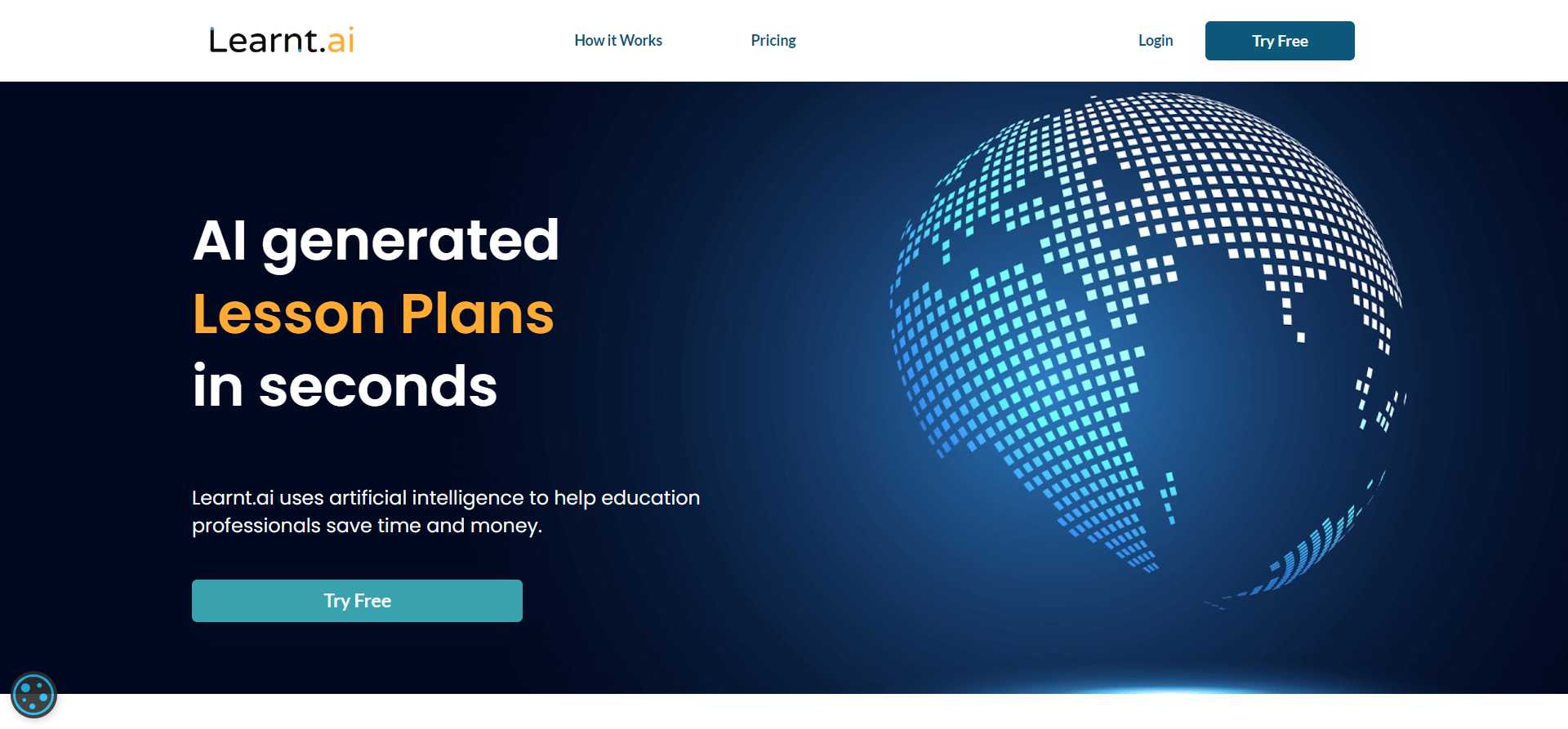 Screenshot from Learnt.ai, April 2023
Screenshot from Learnt.ai, April 2023
Learnt.ai has been specifically created for the needs of education professionals.
Using the GPT language generation model, it can generate human-like text for learning objectives, icebreakers, assessment questions, and more.
It can help with the tedious tasks of manually creating lesson plans, learning objectives, and assessment questions. Automating these processes can help you save valuable time and effort.
The Future of ChatGPT And The AI Marketplace
There are so many wide-ranging applications for the use of ChatGPT that it is impossible to know them all at any given time.
New applications and processes are being released at a lightning pace, leaving creators to wonder if there is an end to the ChatGPT boom.
Some have even heralded the rise of ChatGPT as the end of SEO.
As many times as somebody has claimed that SEO is dead, they have been proven wrong. And this remains true with the arrival of ChatGPT in the marketplace.
While ChatGPT can be used for some things, it cannot replace a real SEO professional. There is still too much analysis and creativity required that a human mind can do, but ChatGPT cannot.
And those who are claiming otherwise are kidding themselves.
First of all, ChatGPT cannot write error-free content without factual errors.
If you’re writing a piece of content for a specific industry that requires specialized knowledge, you must also possess that knowledge yourself so you can verify and check that ChatGPT is actually correct.
ChatGPT cannot create more sophisticated SEO strategies.
ChatGPT cannot come up with a complete response that answers the question, “What happened to my website when the Google update hit last month?” It might create a very rough approximation based on already written articles, but it’s not going to diagnose and figure out that issue for you.
In Conclusion
There are many reasons why ChatGPT is a fantastic tool – and this author loves ChatGPT and what it can do.
I just advise creators to be cautious about more complex topics and make sure that they are not shooting themselves in the foot by relying on ChatGPT too much.
There’s such a thing as too much of a good thing.
We don’t want to get into the practice of relying on ChatGPT only to have it taken away later if regulators decide that’s the best thing to do.
SEO is definitely not dead – and ChatGPT will not be its killer.
But to keep it alive and kicking, SEO pros should stay focused on the details and committed to their work – and don’t rely too much on ChatGPT to get the job done!
More resources:
Featured Image: 13_Phunkod/Shutterstock












